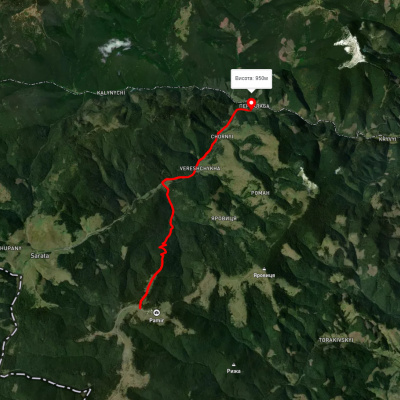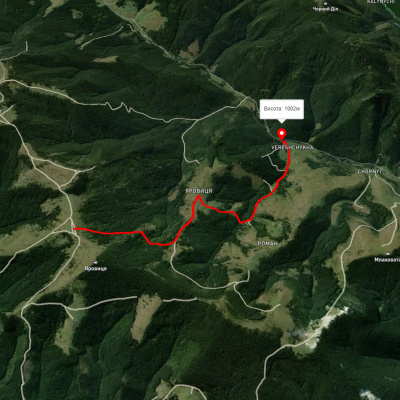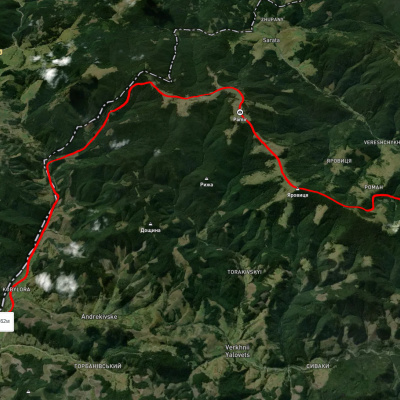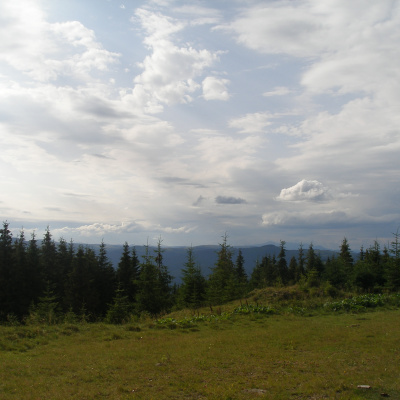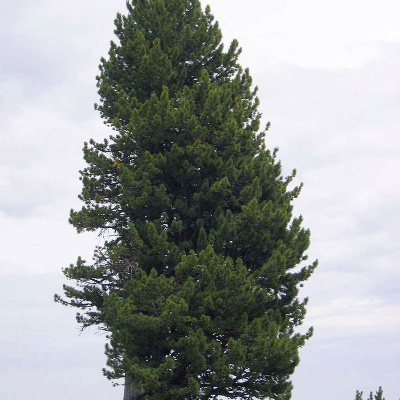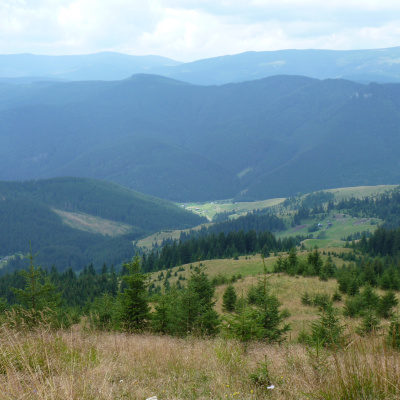Black Dil Nature Reserve Sarata
Chornyi Dil is a landscape reserve of national importance in Ukraine. It is located west of the village of Sarata, Putyla district, Chernivtsi region, in the northeastern part of the Marmarosh crystal massif. The reserve is part of the Cheremosky National Park.
The Chornyi Dil reserve was established on December 29, 1972 as a geological natural monument of local importance, and its area was 2.0 hectares. On May 30, 1979, its area was increased to 263.0 hectares and granted the status of a landscape reserve of local importance, and on February 25, 1980, it was granted the status of a national reserve. In 2001, by the decision of the Chernivtsi Regional Council, its area was increased to 614.9 hectares.
The geological features of the region are metamorphic shales, granite-diorites, Triassic-Jurassic carbonates and Middle-Upper Cretaceous flysch, which created unique natural conditions here.
Almost the entire territory of the reserve is covered with forests (over 80%). The main ones are mono-dominant spruce plantations. Most of them are young and middle-aged plantations, and in hard-to-reach places - virgin spruce. They include the following communities: green-moss spruce, cranberry spruce, cranberry-green-moss, blueberry-green-moss, and forest-blackberry. On Velykyi Kamen Mountain, there are communities of cedar and spruce forests listed in the Green Book of Ukraine, and the cedar pine, which is listed in the Red Book of Ukraine, is a co-dominant in their composition. This is the only place where this species grows in the Bukovinian Carpathians.
In more humid areas (stream valleys, river banks), there are formations of gray alder represented by the cenoses of gray alder without shields and spruce gray alder with flint. Among the shrubs, there is an endemic species of blueberry (Bilberry cinerea).
Other forest-type plants include large astrantia, green tongue, dark red and champignon bark, creeping gudaira, common lamb's-quarters, forest lily, summer plumage, cedar pine, Hosta aconite, Carpathian buttercup, heart-shaped comfrey, rocky perestroika, round-leaved cornflower, Mattioli's cortus and others.
Significant areas are also occupied by meadow-type vegetation communities, which are represented here by communities of red fescue (red fescue, arnica, white-whiskered, pike's-ear), thin bentgrass and soddy fescue, less often Lerchenfeldia sinuosa, and sometimes Waldstein's thistle, which are listed in the Green Book of Ukraine. The following species are also present among the meadow phytocoenoses: blackened eagle, mountain arnica, crescent arnica, shade sedge, Carpathian cornflower, long-horned bilberry, cuckoo's tears ovate, burnt cuckoo's tear, Carpathian sorrel, rejected violet, Poloninsky primrose, matte scabiosa, sawtooth bells, Bukovyna bugleweed, common snail, clove, Hungarian goldenrod, smooth chyna, blue cyanosis, and others.
The rocky fescue communities, which are listed in the Green Book of Ukraine and occupy large areas on the top of Velykyi Kamen Mountain, are of great conservation importance. In addition, the following species are common on this mountain: Transylvanian eagle, Transylvanian buttercup, Jacquet's skerret, multicolored sessile, Jacquet's aconite, gray thistle, and silk braid.
Among the marsh vegetation communities, there are typical formations of swollen sedge and the Opitz's fritillary association, which is listed in the Green Book of Ukraine. Among the rare species here are green tongue, alpine jaundice, Carpathian thothia, Carpathian sugainia, and Mattioli's cortex.
In total, the reserve contains 27 species of vascular plants listed in the Red Data Book of Ukraine and 5 species listed in the European Red List - Doubtful Dwarf, Polonynsky's primrose, Filyarsky's lungwort, Remann's bluegrass and Zavadsky's elisanthus, the latter species is also listed in the Red List of the International Union for Conservation of Nature and Natural Resources (IUCN).
Among the insects listed in the Red Data Book, the mahogany and the large rainbow moth were found here. The red forest ant, which is present on the territory of the reserve, is included in the European Red List. Among the rare mollusks are Lyubomyrsky's hairy snail and Bilts's hairy snail, as well as the oatmeal chondrina, which is listed in the Red Book of Ukraine.
Among the terrestrial vertebrates, 65 species have been found on the territory of the reserve (amphibians - 6, reptiles - 2, birds - 42, and mammals - 15). Among them, you can find the following Red Data Book species: Carpathian newt, mountain newt, spotted salamander, grouse, hairy owl, sparrow owl, forest cat and common lynx. Among the European Red List species, there are wolf and brown bear.
Accommodation around Black Dil Nature Reserve Sarata:
Nearby hiking trails near Black Dil Nature Reserve Sarata:
Які маршрути проходять повз Black Dil Nature Reserve Sarata?
Пропонуємо пройти такі туристичні (пішохідні) маршрути через/біля Black Dil Nature Reserve Sarata: Перкалаба - Томнатик, Верещиха - г. Яровиця, с. Нижній Яловець, через г. Яровиця до с. Шипіт, с. Шепіт, через г. Яровиця, г. Пнів'є, г. Тарниця до с. Пробійнівка, с. Шепіт – г. Яровиця, с. Шепіт, через г. Яровиця, г. Пнів'є, г. Масний Присліп до с. Шибене
